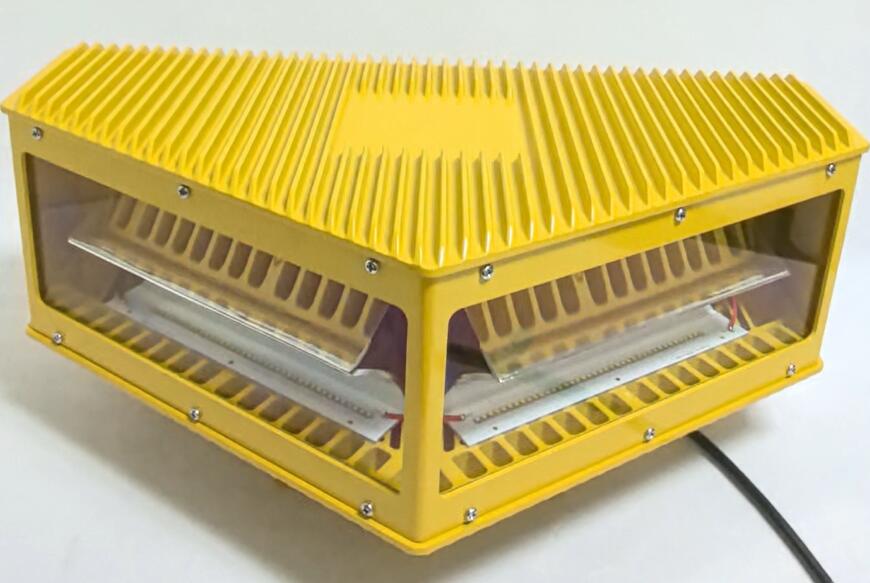Tower Aviation Light: The Pulsating Heart of Aerial Safety
In the intricate and tightly regulated domain of aviation, safety is paramount. As urban landscapes reach ever skyward and critical infrastructure like communication networks expands, the skies are filled with stationary obstacles. Standing as the first line of defense against aerial collisions are tower aviation lights. These are not simple illuminations; they are sophisticated, regulated safety systems designed to transform static structures into highly visible, unmistakable landmarks for pilots. Their relentless, rhythmic pulsation is a universal language of caution, ensuring the seamless and safe flow of air traffic across the globe.
The fundamental purpose of a tower aviation light is to ensure a structure's conspicuity. This function is governed by a rigorous international framework established by bodies like the International Civil Aviation Organization (ICAO), with detailed implementation by national authorities such as the FAA and EASA. The regulations are exceptionally precise, dictating the required light intensity, color, and flash rhythm based on the structure’s height, location, and proximity to airports or common flight paths. This creates a standardized visual lexicon. A pilot, whether flying over the United States or Southeast Asia, will instantly recognize a specific white flash pattern as indicating a very tall hazard, requiring heightened awareness and potential course adjustment.

Tower aviation lights are categorized into three primary classes based on intensity: low, medium, and high. Low-intensity lights, typically steady-burning red, are used on shorter structures in areas of lower air traffic density. Medium-intensity systems offer greater flexibility, capable of emitting either red or white flashes, and are applied to a broader range of obstacles. For the most critical applications—such as structures exceeding 150 meters, those near major airports, or towers in remote areas that pose a significant en-route hazard—high-intensity tower aviation lights are mandatory. These powerful beacons project a brilliant white flash designed to be visible for dozens of nautical miles, even in bright daylight conditions, providing pilots with the maximum possible warning time.
The technology powering these essential systems has undergone a profound transformation. The industry-wide adoption of Light-Emitting Diode (LED) technology represents a quantum leap in performance. Modern tower aviation lights utilize advanced LEDs to achieve unparalleled luminosity while consuming a fraction of the energy required by older incandescent or xenon strobe systems. Beyond efficiency, LEDs offer phenomenal resilience. Their solid-state construction lacks fragile filaments, making them highly resistant to damage from constant vibration, extreme temperature fluctuations, and severe weather events. Their operational lifespan, often measured in hundreds of thousands of hours, drastically reduces the need for maintenance—a critical factor for lights installed on inaccessible mountain-top towers or offshore platforms.
| Tower Aviation Light |
Effective marking of a tall structure requires a holistic lighting strategy. A single tower aviation light is rarely sufficient. Instead, a network of lights is employed to outline the obstacle's full profile. A typical tall communications tower, for instance, will be fitted with high-intensity lights at its apex and medium-intensity lights at intermediate levels down its structure. This multi-tiered approach ensures the tower is perceived by pilots not as a single point of light, but as a defined, three-dimensional object, dramatically improving spatial awareness and risk assessment, especially during night or low-visibility operations.
A significant modern challenge involves balancing absolute safety with environmental and community considerations. The intense light output necessary for aviation safety can contribute to light pollution, affecting astronomical research and disrupting ecosystems. The industry has responded with innovative solutions. Precision optics are now used to tightly focus the light beam upward into the approach corridors, minimizing scatter and lateral glare. The next frontier involves "smart" adaptive lighting systems. These systems, integrated with sensors or radar, can operate at reduced intensity during times of no traffic and automatically amplify their output only when an aircraft is detected on a converging path, thereby preserving safety while minimizing environmental impact.
As we look to the future, the role of the tower aviation light is set to become even more integral. The advent of urban air mobility (UAM) and the exponential growth in unmanned aerial vehicle (UAV) operations will create a denser, more complex low-altitude airspace. This will necessitate the illumination of a new class of obstacles. Future tower aviation lights may evolve from passive visual markers into interactive nodes within a broader digital safety ecosystem. They could be equipped to broadcast their exact GPS coordinates and identification data directly to an aircraft’s cockpit systems or a drone’s flight computer, enabling automated collision avoidance and advancing the next generation of aerial navigation.
The tower aviation light is a masterpiece of purpose-driven engineering. Its persistent, reliable flash is the pulsating heart of aerial safety, a vital sign that the infrastructure below is actively guarding the skies above. It is a silent sentinel that works tirelessly, day and night, to prevent disaster and protect lives. As humanity continues to build upwards and embrace new forms of flight, these unwavering beacons will remain a non-negotiable pillar of aviation infrastructure, ensuring that the sky remains a safe and navigable domain for all.
